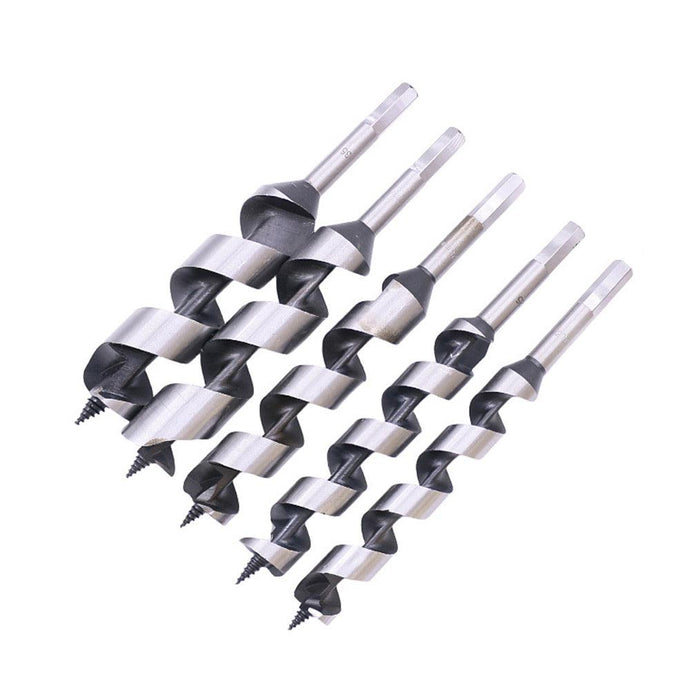- Home
- /
- Difference Between Metal And Wood Drill Bits
Difference Between Metal And Wood Drill Bits
Metal vs. Wood Drill Bits: Understanding the Key Differences for Successful Drilling
When it comes to drilling, the type of bit you use can greatly affect the outcome of your project. While both metal and wood drill bits serve the same fundamental purpose - creating holes in materials - their designs, materials, and intended applications differ significantly. Knowing the difference between metal and wood drill bits is essential for achieving clean, precise holes and preventing damage to both your tools and the material you're working with.
Metal drill bits are specifically designed to cut through hard materials like steel, aluminum, and other metals. They are typically made from high-speed steel (HSS) or cobalt, materials that can withstand the high friction and heat generated when drilling into metal. Metal drill bits feature a sharper cutting angle, usually around 118 to 135 degrees, which allows them to pierce hard surfaces more effectively. The sharper point ensures that the bit penetrates the metal without causing excessive heat buildup, which could lead to blunting or breakage.
Another key characteristic of metal drill bits is their strength and durability. Metal is a tough material that requires a bit capable of maintaining its cutting edge over time. For this reason, many metal drill bits are coated with titanium or black oxide to enhance their lifespan and reduce friction. Cobalt drill bits are also widely used for drilling into harder metals, as the alloy can endure higher temperatures and maintains its sharpness longer than standard HSS bits. These features are critical when working with metals, as the wrong bit can easily overheat, wear down, or cause an irregular hole.
In contrast, wood drill bits are designed for softer materials, and their construction reflects that purpose. Wood bits typically feature a much sharper point at the tip, known as a brad point, which helps guide the bit into the wood with precision. The sharp center point allows the bit to start drilling exactly where it is positioned, preventing the bit from wandering as it begins to cut into the material. This precision is important in woodworking, where splintering or inaccuracies in the hole can ruin the aesthetic of a project.
The cutting edges of wood drill bits are also designed to slice cleanly through the wood fibers, producing smooth, splinter-free holes. Brad point bits, for example, have cutting spurs at the outer edges that score the wood before the bit removes the material, minimizing tearing around the edges of the hole. This feature is essential for woodworking projects where a clean finish is critical, such as when building furniture, cabinets, or decorative pieces.
Wood drill bits typically have a less aggressive cutting angle than metal bits, often around 90 to 100 degrees. This allows for smooth drilling without excessive tearing, which is unnecessary in softer materials like wood. Additionally, wood bits are often longer than metal bits, as they are designed for drilling deeper holes in materials that are easier to penetrate.
Another major difference between metal and wood drill bits is the design of their flutes - the spiral grooves that help remove material from the hole as you drill. Metal drill bits have narrow flutes that help remove small metal shavings efficiently while maintaining the strength of the bit. This is important because drilling into metal generates a lot of friction and heat, and the bit needs to remain sturdy to avoid bending or breaking under pressure. In contrast, wood drill bits have wider flutes to remove larger wood chips quickly, preventing clogging and ensuring a smooth drilling experience.
The speed and pressure applied during drilling also differ between metal and wood drill bits. When drilling into metal, it's essential to use slower speeds and steady pressure to avoid overheating the bit or material. In contrast, wood can be drilled at higher speeds with less risk of damaging the bit. This difference in drilling technique further underscores the importance of using the right bit for the material - applying metal-drilling methods to wood, or vice versa, can lead to poor results and unnecessary wear on the tools.
While metal and wood drill bits may appear similar at first glance, their differences are crucial for efficient and accurate drilling. Metal drill bits are designed for strength, durability, and heat resistance, capable of cutting through tough materials like steel and aluminum. Wood drill bits, on the other hand, are crafted for precision and smoothness, ensuring clean holes in softer materials like pine, oak, or plywood. Using the correct drill bit for the job not only protects your tools but also ensures the best possible outcome for your project. Whether you're drilling into hard metal or soft wood, understanding these distinctions is key to success.
